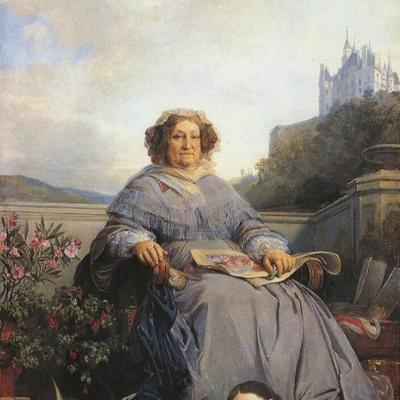
Raise a glass to Barbe-Nicole Clicquot-Ponsardin
As we inch closer to a new year the topic of Champagne is bound to crop up soon. So this seems as good a segue as any to take a look at some of the important names and stories behind the sparkling elixir we all so enjoy today.
Where to start then? With arguably one of the single most important names in the business of course, but possibly not the one that immediately comes to mind – The Grande Dame of Champagne herself, Barbe-Nicole Clicquot-Ponsardin.
La Grande Dame
The name behind that most ubiquitous of golden-yellow labels, she was born Barbe-Nicole Ponsardin and was the daughter of Ponce Jean Nicolas Philippe Ponsardin, a wealthy textile manufacturer and politician, and his wife Jeanne Josephe Marie-Clémentine Letertre-Huart. In the hopes of a bright future for their daughter, Barbe-Nicole was married to François Clicquot, the son of another wealthy textile family.
As François had always dreamt of a future in the Champagne business, they used their considerable dowry to purchase vineyards together, sowing the seeds of the Grande Marque, albeit with little knowledge of winemaking. However, just 6 years after their marriage François died of typhoid fever, leaving Barbe-Nicole as the eponymous “Veuve” (widow) Clicquot.
Rather than packing in her aspirations of winemaking as her father-in-law Philippe Clicquot had expected, Barbe-Nicole instead came to him with a proposition – to risk her inheritance entirely and, with further investment from him, continue to pursue the business. Philippe Clicquot saw that though she lacked business training, she was driven and highly intelligent and so, under the condition that she undergo an apprenticeship, agreed that she could run the business herself. At just 28, she became the first woman to run a Champagne house. This was largely unheard of at the time, but Barbe-Nicole was an unstoppable force and a shrewd risk taker.
In 1810 she created the very first vintage champagne, a concept which became huge upon her second vintage: 1811 - the year of the comet, so named after the Flaugergues comet’s visibility throughout the growing season. This also happened to be the vintage where she had vastly improved the quality of her Champagne by inventing the riddling rack – an invention that drastically streamlined the dead yeast removal process without damaging the wine. The process also removed the rather unappealing cloudy look that Champagne characteristically had the time, creating what is considered to be the world’s first “modern” Champagne. Not only had she cracked the code to objectively better wine, allowing dosage to be added as desired in the process, she’d also done so in a way that meant greater output.
It was this very vintage that found enormous success in Russia, as after the Napoleonic wars had concluded, Barbe-Nicole had smuggled her Champagnes as far as Amsterdam and was the first to supply the Russian courts upon the declaration of peace. She had also tailored the sweetness of these wines to Russian tastes, a move that enamored her brand to Russia, effectively cornering the market. She immediately became one of the most talked about names in Champagne, and not just as a producer, but also as an innovator as her approach towards tailored dosage and vintage Champagnes opened up many possibilities.
And she still wasn’t done. In 1818, she was the first to blend Pinot Noir into her Champagnes, creating the very first true rosé Champagne. This, the globally recognized brand that she created and her many other achievements have now become standards in the Champagne world we know today. Before anyone else, Barbe-Nicole Clicquot was the single most important person and foremost innovator in all of Champagne.
So if you’re toasting the New Year with a bottle of La Grande Dame, why not raise a glass to Barbe-Nicole Clicquot-Ponsardin, without whom Champagne would be very different.
With around 90% Pinot Noir in the blend, La Grande Dame is aged for a minimum of 7 years in the medieval chalk caves underneath Reims. Classic notes of pear, almond, biscuit, green apple and bread show throughout, but in an altogether unique and elevated way that is truly beyond compare.
Want to read more? Check out our other blogs:



